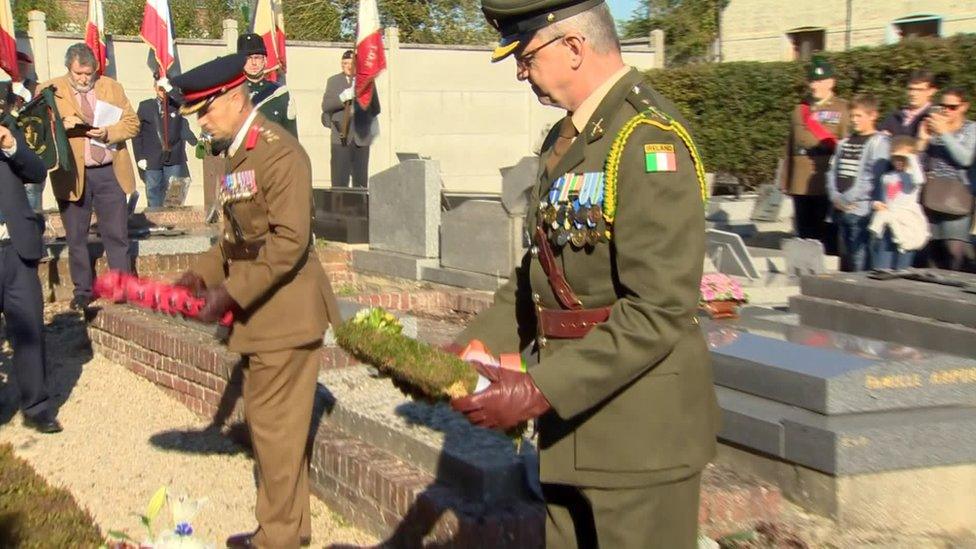Award for County Antrim man behind one-of-a-kind war museum
- Published
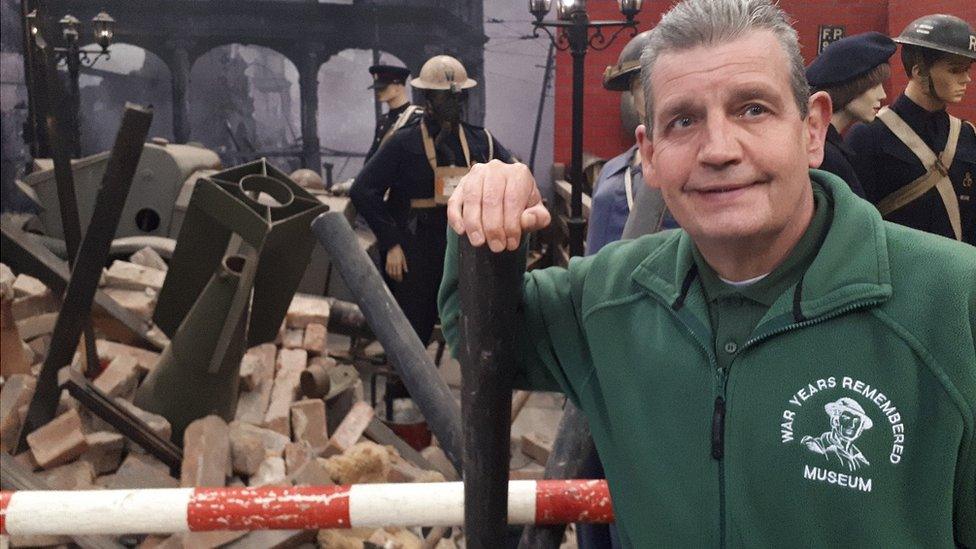
Prime Minister Theresa May praised David McCallion for "allowing thousands of people in NI to engage with their military heritage"
A County Antrim man whose collection of wartime memorabilia has developed into one of the most important exhibitions of military history in Ireland has said he was "humbled and honoured" to receive a prestigious award from the prime minister.
David McCallion, founder and curator of War Years Remembered, received the Points of Light award, which recognises outstanding individual volunteers who are making a change in their community.
The collection started when Mr McCallion was eight-years-old, when his grandfather passed on a belt and chocolate tin from his World War One service.
"Granda lifted me up on his knee and started talking about the First World War and he didn't hold back - it was blood, guts and gore. It was really hard hitting and I was sucked into the story of it all," he said.

The collection that started with a chocolate tin has expanded to include this World War Two Bofors anti-aircraft gun
That small acorn grew into an unorthodox museum containing thousands of artefacts - uniforms, weapons, vehicles, letters, and personal equipment reflecting every aspect of life and death in the world wars, at home and at the front.
Mr McCallion explained the philosophy behind the collection.
"I was more interested in the story behind the artefact rather than the artefact itself," he said.
"What we're trying to do here is to give the people a voice again. In a lot of cases over the years these people were the unsung heroes.
"They didn't have a voice and it was sad that we didn't give them the recognition they deserved," Mr McCallion added.
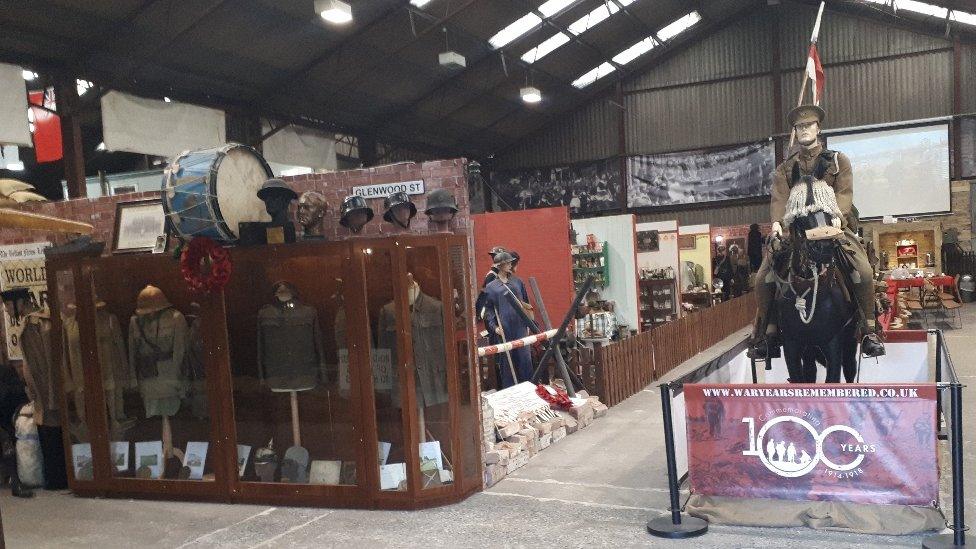
Mr McCallion would like to see his collection re-housed in a permanent home
The museum is a hidden treasure in itself, in an unassuming grey warehouse on an industrial estate in Ballyclare, County Antrim.
Walking through the small entrance door you can't help but be taken aback by the sheer size of the collection and the realism of the exhibits.
"When you walk in it's like a Tardis, you come through the front door and everybody just goes, 'wow!'" Mr McCallion says.
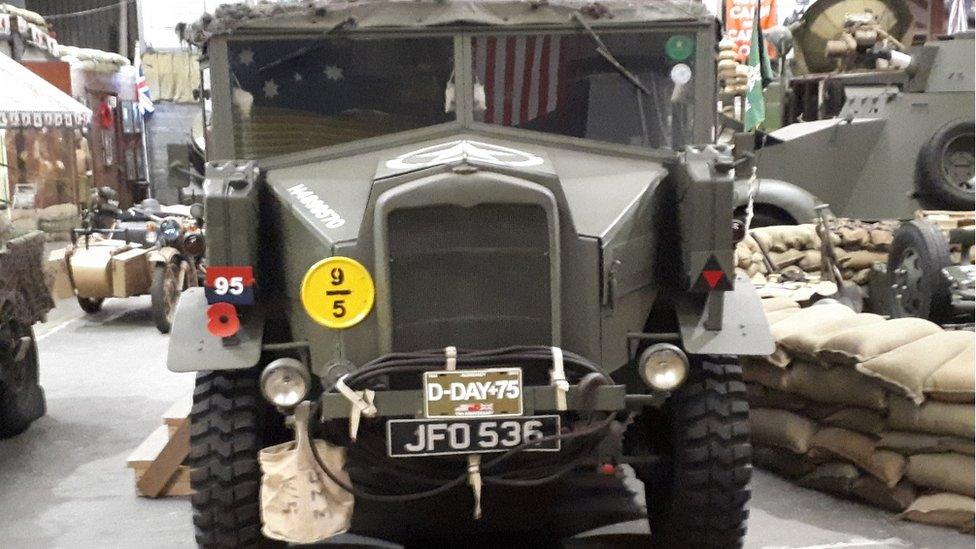
Mr McCallion believes the Morris gun tractor is the only original D-Day vehicle on display in Ireland
The visitor's eyes are drawn first to series of remarkable dioramas from a World War One officer's dug-out to a fully-equipped signaller's hut and the recreation of a 1940s home from the World War Two Blitz.
Then there are the big guns and the vehicles, including two enormous anti-aircraft guns.
There can't be many museums where schoolchildren are encouraged to try their hand swivelling the barrel on a 1938 40mm Bofors gun, a type used for air defence on the beaches at Dunkirk.
"We don't like to put everything into glass cases where you don't have access to it and some items we do actually let people handle while we're doing the talks, and we even have replica uniforms for people to dress up in," Mr McCallion explained.
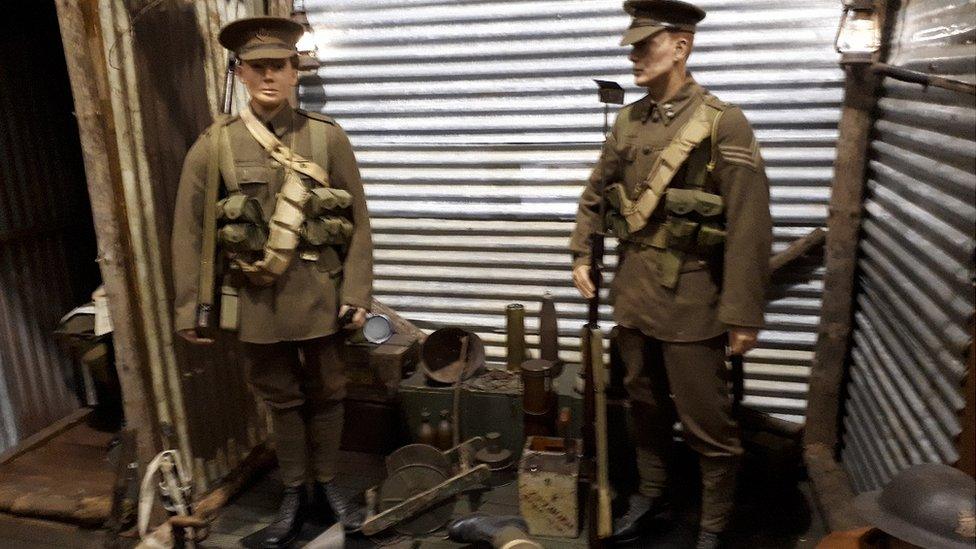
The exhibition includes dioramas from World Wars One and Two
The museum also aims to show how Irish nationalists and unionists both fought as part of the British forces in the First World War - one display shows uniforms and paraphernalia from the Irish Volunteers alongside examples from the Ulster Volunteer Force.
Of the thousands of historic artefacts, Mr McCallion has one he is particularly fond of, and once again it's the story behind the exhibit that matters to him:
"Believe it or not, it's maybe the toothbrush I have in a soldier's kit.
"I knew that man. I met that man as a boy and it's all worn down one side. It was the only brush he had for the entire duration of the war and you can see where he used it - because I knew him and I know the story behind him and what he endured."
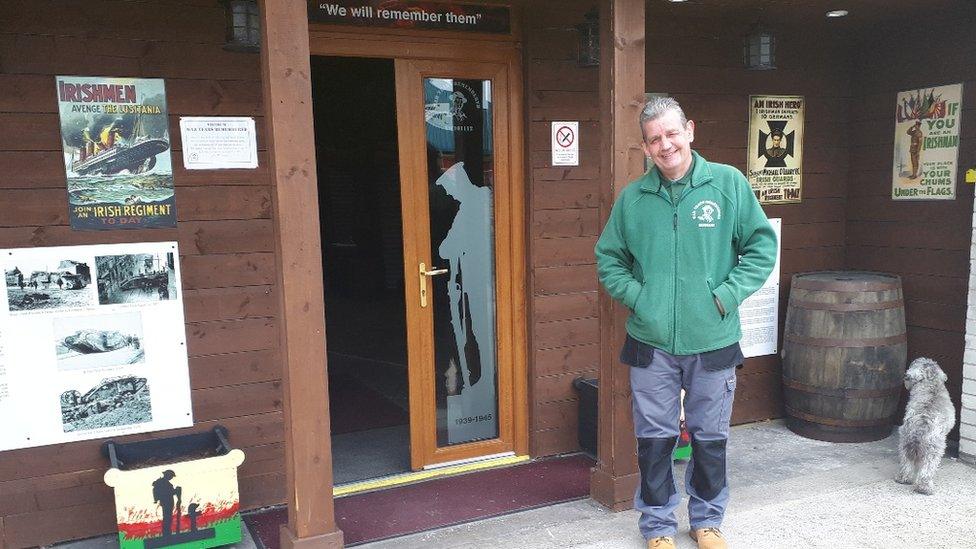
David McCallion greets visitors at the entrance to his remarkable "history Tardis"
Part of the charm of the museum is its informality, the fact that visitors can get close up to the exhibits and engage with the enthusiastic volunteers.
It's an aspect of the museum that may have to change if Mr McCallion is to achieve his ambition for the collection he has so lovingly put together.
"It needs a permanent home, it needs to be preserved for all our future generations and to inspire our young people to take over from where I got the bug when I was eight years of age. At the end of the day, I'm only the curator of it while I'm on this earth when it becomes somebody else's turn."
- Published4 July 2019
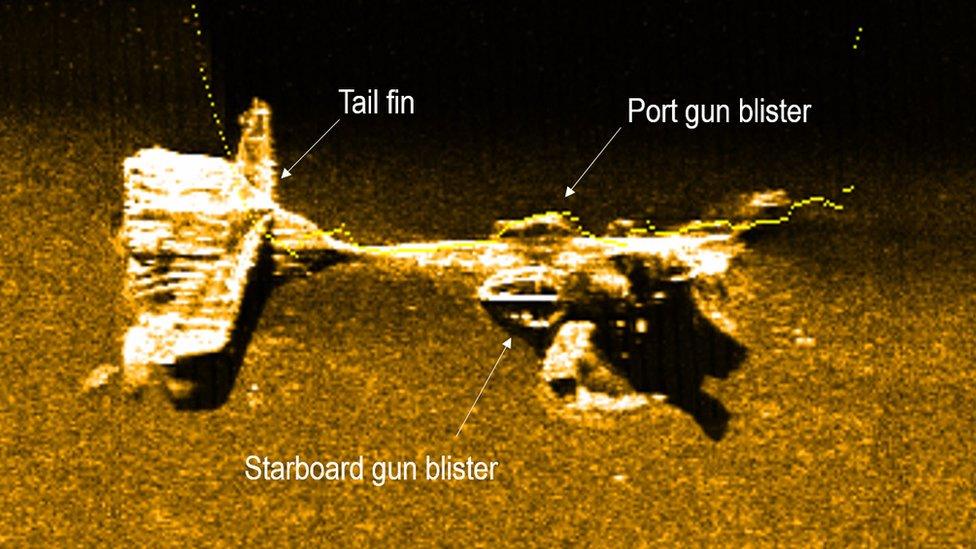
- Published9 November 2018
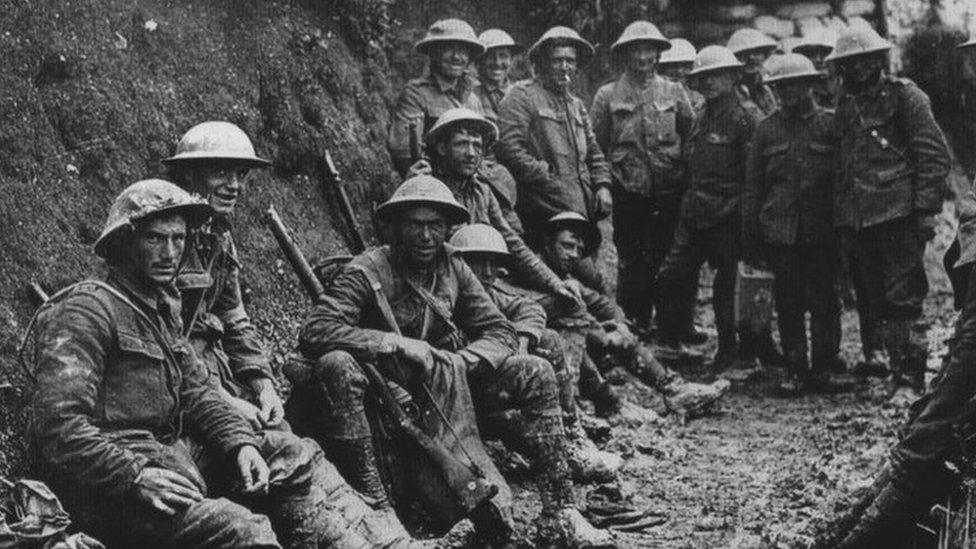
- Published14 October 2018
